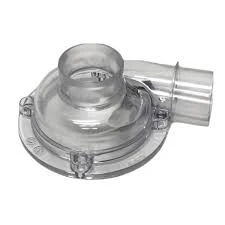Mobile:+86-311-808-126-83
Email:info@ydcastings.com
low pressure aluminum casting
Low Pressure Aluminum Casting A Comprehensive Overview
Low pressure aluminum casting is a manufacturing process that has gained significant traction in industries such as automotive, aerospace, and consumer products due to its ability to produce high-quality, complex aluminum components. This method differs from other casting techniques in the way molten aluminum is introduced into the mold, yielding several advantages in terms of precision, surface finish, and structural integrity.
At its core, low pressure casting involves the use of a pressurized chamber that holds the molten aluminum. The process starts by melting aluminum alloy in a holding furnace. Once the alloy reaches the desired temperature, it is transported to a casting machine where it is introduced into a mold through a controlled low-pressure system – generally ranging from 0.5 to 1.0 bar. The pressure drives the molten aluminum into the mold, filling all cavities, including those that are intricate in design.
One of the primary advantages of low pressure aluminum casting is the control it allows over the metal flow. This controlled filling significantly reduces turbulence and minimizes the introduction of air bubbles. As a result, the end products exhibit a finer surface finish and reduced porosity, leading to improved mechanical properties. These characteristics make low pressure aluminum castings particularly suitable for applications where strength and durability are paramount.
Another notable benefit is the ability to produce lightweight components. As industries strive to enhance fuel efficiency and performance, low pressure casting facilitates the creation of thinner-walled parts without compromising structural integrity. This is especially critical in the automotive sector, where every gram counts towards reducing overall vehicle weight. In conjunction with the rising demand for electric vehicles, where lightweight materials are crucial for battery efficiency, low pressure aluminum casting offers a viable solution.
low pressure aluminum casting

However, the low pressure aluminum casting process is not without challenges. Mold design and fabrication are crucial aspects that require careful consideration. The molds are typically made of sand or metal and must withstand thermal and mechanical stresses during casting. Additionally, the initial investment in equipment for low pressure casting can be higher compared to traditional methods, which may deter some manufacturers. Nevertheless, the long-term benefits, such as reduced scrap rates, improved product quality, and lower operational costs, often outweigh these initial hurdles.
The flexibility of low pressure aluminum casting also enables manufacturers to produce a wide range of components, from intricate engine parts to large housings and brackets. With advancements in technology, industries are continually finding innovative applications for low pressure cast components. For instance, it has been increasingly used in the production of components for electric vehicles and renewable energy systems, aligning with the trend towards sustainability.
Furthermore, low pressure aluminum casting aligns with modern manufacturing paradigms, such as Industry 4.0. Automation and smart manufacturing processes can be integrated into casting operations, enabling real-time monitoring and optimization of production processes. This not only enhances efficiency but also ensures compliance with stringent quality standards.
In conclusion, low pressure aluminum casting stands out as an effective and efficient method for producing high-quality aluminum components. Its unique advantages in precision, lightweight design, and reduced porosity make it an appealing choice for various industries. As technology continues to advance, and industries increasingly prioritize sustainability and efficiency, low pressure aluminum casting is poised to play a critical role in the future of manufacturing.
-
Impeller Technology That Powers Precision in Pump SystemsNewsMay.22,2025
-
Valve Durability Begins with Quality Cast Iron ComponentsNewsMay.22,2025
-
Performance Cooling with Advanced Automobile Water Pump SolutionsNewsMay.22,2025
-
How Motor Housing and Oil Pans Shape Engine PerformanceNewsMay.22,2025
-
How Metal Castings Drive Modern Manufacturing EfficiencyNewsMay.22,2025
-
Exploring the Engineering Behind Valve Body CastingsNewsMay.22,2025











